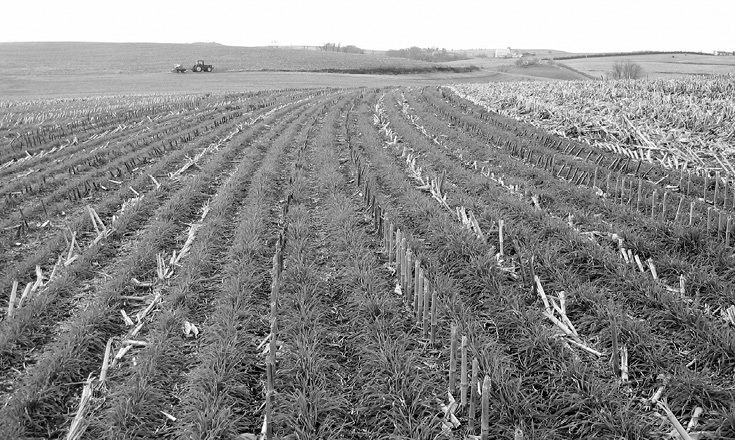No-Till Farmer
Get full access NOW to the most comprehensive, powerful and easy-to-use online resource for no-tillage practices. Just one good idea will pay for your subscription hundreds of times over.

Trouble establishing a stand before winter is perhaps one of the biggest reasons some no-tillers steer clear of nutrient-recycling, organic-matter-building cover crops.
For Dean James, farm manager of Don Cotner Farms in Danville, Pa., the solution is to start by creating a whole-farm plan geared for cover-crop success.
The 1,150-acre farm has been 100% no-till for nearly 40 years and cereal rye cover crops have been in the farm’s rotation of corn, soybeans and hulless barley for 10 years.
“Ideally, we use a systematic approach to planting,” James says. “We consider each field’s specific needs and our management plans for the year.”
The biggest crop on the farm is eggs, so there’s plenty of chicken litter to spread — enough to cover a quarter of their acres annually. Manure spreading is a significant factor in James’ cover-crop system.
“We try to put a cereal rye cover crop on every corn and soybean acre we can in the fall, usually about 250 acres,” James says. “The cover crop helps us build organic matter, reduce soil erosion and retain nutrients from the chicken litter we spread.
“If I’m planning to spread manure on a field, I also plan to put a cover crop on those acres.”
But in order for cover crops to do their job, they need to be up and growing as soon as possible.
Successful establishment of the cover crop starts long before a rye seed, or any seed, ever hits the ground. Determining the maturity length…